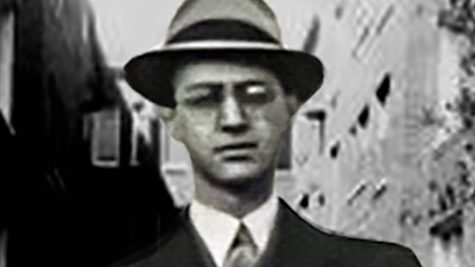Get ready to groove, because the long-lost sounds of The Danceland Years are back, featuring music that’s been out of reach for nearly half a century. Danceland Records, founded in 1948 by Morris Kaplan, offers an audio time capsule of a vibrant era when American popular culture was bubbling at the fringes, just waiting to explode.
Here’s what Billboard had to say on November 13, 1948:
“The latest local entrant in the independent label field is the Danceland Record Company, headed by Morry R. Kaplan of Kaplan Music Sales, record distributors. First release is a double by the Candy Johnson Orchestra, ‘Stampin’ and ‘Ebony Jump,’ released nationally this week. The company will specialize in the race field.”
Candy Johnson
Candy Johnson’s Stampin’ and Ebony Jump kicked off Danceland Records in style back in November 1948. These two sides of a 78 rpm single didn’t just announce the label’s birth, they brought in waves of fans—black and white alike—across the Midwest. Johnson, a beloved saxophonist in his early 30s, had been lighting up the Detroit music scene for years. When he teamed up with Kaplan, it was magic. Joined by the legendary pianist Stubby Washington, whose unique blend of jazz, blues, and early R&B vibes made him a local favorite, Johnson and his trio laid down tracks in Kaplan’s living room.
Candy Johnson’s four tunes on The Danceland Years show off the rollicking, sax-driven sound that made him the label’s top-selling artist. Stampin’ was a smash hit, selling a remarkable 60,000 copies—no small feat for a fledgling independent label. Kaplan recalls the wild days of the late ’40s when you could cut a record, hand it to a DJ, and hear it on the airwaves in no time. And just like that, Danceland was on the map, with Stampin’ dominating in both Detroit and Chicago.
John Lee Hooker
But The Danceland Years doesn’t stop there! Among its treasure trove are five tracks by none other than John Lee Hooker, representing the earliest known recordings of his groundbreaking style. Hooker, who’d eventually inspire everyone from The Rolling Stones to Led Zeppelin, was still a hidden gem when Kaplan invited him to record in early 1949. Going by the pseudonym Little Pork Chops at the time, Hooker laid down his raw, boogie-woogie blues over a week-long session in Detroit. Though his Danceland singles didn’t sell more than 10,000 copies, they offer a thrilling glimpse into the early stages of a career that would reshape popular music forever.
Rose Nelson
Now here’s a track that’s getting its well-deserved spotlight! Take Me Back Daddy by Rose Nelson, featuring Candy Johnson on tenor baritone sax and Stubby Washington on piano, was recorded at the Danceland Ballroom in 1949. This sultry number is now making waves again, featured in the film A Million Colours—proof that Danceland’s magic still resonates today.
Tony “Blues” Lewis
It wasn’t long after the success of Hooker’s singles that Candy Johnson introduced Kaplan to the harmonica-slinging Tony “Blues” Lewis. Kaplan was blown away by Lewis’ vocal chops and gritty harmonica work, leading to four recordings in the family basement in 1949. While Lewis didn’t catch the mainstream spotlight, his four tracks on The Danceland Years are a time capsule of the evolving postwar blues sound in Detroit—a true gem for blues enthusiasts.
So, there you have it—the untold story of Danceland Records, where some of the most exciting music of the late ’40s was born, but until now, kept in the shadows. Let the grooves roll on!

